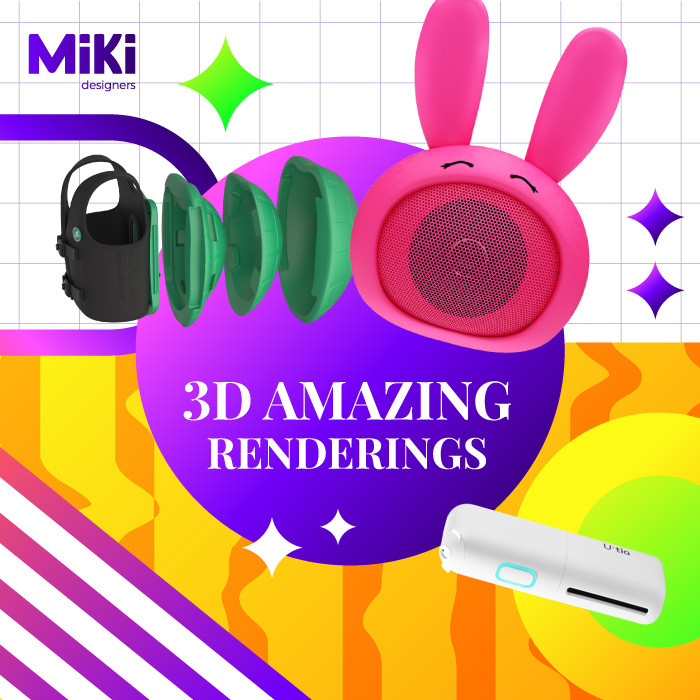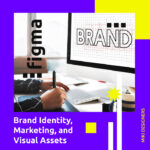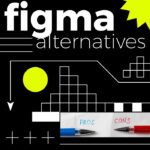
Unlock Sales: The Power of Realistic 3D Product Renderings for E-commerce & Marketing
In today’s bustling digital marketplace, capturing customer attention is tougher than ever. Businesses face intense visual competition and need to convey product value instantly. This is where 3D product renderings step in as a cutting-edge solution. They create stunning, lifelike product visuals without the usual limitations and costs of traditional photography. High-quality product visualization isn’t just about looking good; it’s a crucial driver of engagement, building trust, and ultimately boosting sales for your business.
This post will guide you through the essential role of 3D renderings for modern businesses. You’ll understand their immense benefits, diverse applications, and how to leverage this powerful technology to elevate your brand.
What Are 3D Product Renderings? A Clear Definition
3D renderings are highly realistic, computer-generated images of products. These visuals are meticulously crafted from digital 3D models and are designed to mimic real-world photographs with incredible precision. They are synthetic images, meaning they are created entirely within a computer environment.
The key distinction from traditional photography lies in their creation process. Instead of capturing a physical object with a camera, 3D renderings are computationally produced. This offers unparalleled control over every single aspect of the image, from lighting and shadows to materials and viewing angles. The foundational role in this process belongs to 3D models – digital representations of objects. These models serve as the base for creating any visual angle, material, or lighting scenario imaginable. The achieved quality and realism are often so high that these images become indistinguishable from actual product photos, enabling businesses to showcase products beautifully even before they physically exist.
Why Your Business Needs 3D Product Renderings: Beyond Just ‘Good-Looking’ Images
Investing in 3D product renderings offers concrete business benefits and a measurable return on investment (ROI). They are more than just aesthetically pleasing visuals; they are powerful commercial tools.
- Increased Sales & Conversions: Hyper-realistic visuals build immediate customer trust and reduce purchase hesitation by providing crystal-clear product understanding. When customers see products in their best light through detailed product renderings, it directly leads to higher conversion rates and increased sales.
- Cost-Effectiveness & Flexibility: Compared to traditional photography, 3D renderings offer significant savings. They eliminate expenses for photographers, studio rentals, props, and complex logistical coordination. The ability to effortlessly generate countless product variations (different colors, materials, or features) or entirely new scenes without costly reshoots is a game-changer.
- Brand Consistency & Professionalism: Uniform, high-quality product renderings across all your marketing channels project a polished and cohesive brand image. This consistency enhances credibility, strengthens brand recognition, and reinforces a professional presence.
- Speed to Market: 3D renderings allow you to create compelling marketing collateral and visuals long before a physical prototype is available. This accelerates product launches, facilitates pre-sales campaigns, and gives you a head start in a competitive market.
- Directly addressing commercial intent: By providing a comprehensive visual experience, 3D product renderings directly address the commercial intent of potential buyers. They offer the detailed information and visual clarity customers need to make a confident purchase decision. Understanding what users seek when they search for products online is critical for optimizing content and visuals to meet their needs. Learn more about how to identify search intent.
- Enhanced Marketing & Storytelling: Advanced product visualization techniques enable dynamic storytelling. Businesses can showcase product features, benefits, and diverse usage scenarios in engaging and immersive ways, truly bringing products to life for their audience.
Key Applications: Where 3D Product Renderings Shine
The versatility of product renderings makes them indispensable across various commercial platforms and marketing needs. They are perfect for everything from Amazon images to sophisticated marketing materials.
- E-commerce Product Listings (e.g., Amazon, Shopify):
- Compelling Amazon images created with 3D renderings significantly increase click-through rates and convey product value more effectively than standard photos.
- Virtual staging, lifestyle shots, and interactive 360-degree views made possible by accurate 3D models provide a complete customer experience.
- Product renderings are ideal for creating A+ content and enhanced brand experiences on platforms like Amazon, setting your listings apart.
- Website & Online Stores: Integrate high-resolution product visualization seamlessly into product pages, stunning hero sections, and engaging banners to elevate your overall website aesthetic and user experience.
- Digital Marketing & Advertising Campaigns: Utilize visually striking 3D renderings for social media posts, banner ads, email marketing campaigns, and retargeting ads to capture attention and drive engagement across all digital channels.
- Product Development & Design Review: 3D models and preliminary 3D renderings facilitate internal design iteration, stakeholder feedback, and rapid prototyping long before physical production. This saves significant time and resources in the development cycle.
- Investor Pitches & Presentations: Leverage professional product renderings to present conceptual products or future developments to potential investors or internal teams with high-fidelity, convincing visuals.
Exploring Types of 3D Product Renderings for Your Needs
3D renderings come in various styles and techniques, allowing businesses to choose what best suits their specific product and marketing strategy.
- Still Images: The most common form, providing high-resolution static shots from any conceivable angle. These are perfect for product catalogs, brochures, and basic e-commerce listings.
- 360-Degree Views/Spin Renders: These are interactive rotations that allow customers to drag and explore a product from all sides. They offer a comprehensive and engaging viewing experience, revealing every detail.
- Exploded Views: Ideal for complex products, these renders showcase internal components and assembly. They are perfect for technical explanations or demonstrating innovative design features.
- Lifestyle Renders: These advanced product visualization techniques place products in realistic, aspirational environments to demonstrate their use-case and context. They effectively sell an experience rather than just a product.
- Animation/Product Videos: Dynamic 3D renderings transformed into short videos. They are excellent for engaging demonstrations, assembly instructions, or compelling promotional content for social media and advertising.
- Augmented Reality (AR) Assets: Creating specialized 3D models compatible with AR applications allows customers to ‘try before they buy.’ They can place virtual products in their physical environment using a smartphone, enhancing the shopping experience.
The Process: From Concept to Stunning 3D Image
Understanding how 3D renderings are created can demystify the process for businesses considering this service. It’s a multi-step journey from an initial idea to a polished visual.
- Briefing & Discovery: The initial stage involves understanding the client’s product specifications, desired aesthetic, target audience, and marketing goals for the 3D renderings. This ensures the final output aligns perfectly with the brand vision.
- 3D Modeling: This is the core step where an accurate digital 3D model of the product is constructed. This can be done from CAD files, detailed sketches, physical samples, or a series of photographs.
- Texturing & Materials: Realistic textures, colors, and material properties (such as glossiness, transparency, or reflectivity) are applied to the 3D model. This mimics the product’s real-world appearance with incredible fidelity.
- Lighting & Environment Setup: A virtual lighting scheme and environment (e.g., a pristine studio backdrop, a bustling city street, or a cozy home setting) are designed. This perfectly illuminates the product and creates the desired mood and atmosphere.
- Rendering: This is the computationally intensive phase where specialized software processes all the data – the model, textures, lighting, and camera angles – to generate the final high-resolution 2D image from the virtual scene.
- Post-Production: The final stage involves enhancements and refinements using image editing software. This perfects color balance, contrast, and adds any subtle effects for a truly world-class, polished finish.
Choosing the Right 3D Rendering Service: What to Look For
Selecting a reputable 3D rendering service or professional is crucial for ensuring high-quality results that meet your business needs.
- Portfolio & Experience: Emphasize reviewing a service provider’s past work for quality, consistency, and relevance to your industry and product type. A strong portfolio speaks volumes.
- Communication & Project Management: Stress the importance of clear, responsive communication throughout the project lifecycle. This ensures your vision for the 3D renderings is accurately realized and any feedback is promptly addressed.
- Turnaround Time & Pricing: Advise on evaluating quotes against industry standards and project timelines. Balancing cost-effectiveness with the need for timely delivery is key.
- Software & Technology Used: Suggest inquiring about the tools and software the service uses. Ensure they align with industry best practices for producing high-quality 3D renderings and current visual standards.
- Client Testimonials & Reviews: Encourage checking references and reviews to gauge client satisfaction and the reliability of the chosen service. Honest feedback is invaluable.
- Understanding Your Needs: Highlight that a good service provider will ask detailed questions about your product, brand, and marketing objectives. They should tailor their 3D rendering solutions to truly meet your specific requirements.
Conclusion: Elevate Your Brand with Superior Product Visualization
3D product renderings offer transformative power, reiterating their essential role for modern businesses aiming to stand out, build trust, and drive sales in today’s visually-driven market. The undeniable versatility, cost-efficiency, and significant ROI of investing in high-quality 3D renderings make them indispensable for various marketing and e-commerce applications.
It’s time to explore how professional 3D renderings can revolutionize your own product presentation. Consider seeking a consultation or requesting a quote from a trusted provider. By embracing this powerful technology, businesses can stay ahead of the competition and define the future of product visualization.




